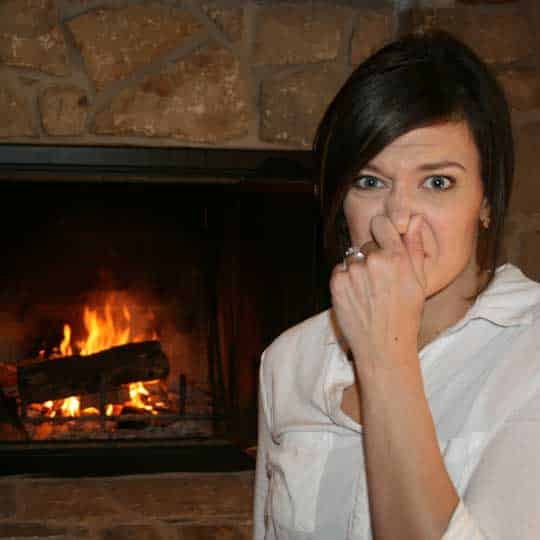Smoking & Draft Problems Solved
You may be surprised by how many different issues people have with their chimney and fireplaces.
A little knowledge goes a long way. Full Service Chimney is here to help you make the most of your burning system, for the sake of your home and your sanity!

Your most common fireplace smoking and draft problems solved:
- Make sure fireplace damper is open before starting a fire. Non-functional or stuck dampers can be the cause of smoking problems.
- A cold flue may have to be “preheated”. This can be accomplished by priming the flue with a rolled up newspaper. Light one end, hold it way up in the damper opening. Let it burn down aways and drop it on the logs to finish burning. This may need to be done twice. As the draft reverses, the warm flue gases will begin to move up the flue. Some basement fireplaces won’t respond to preheating.
- Sometimes smoking problems are the result of blockages in the flue. Not only blockages, but a heavy build-up of soot can affect the way your chimney performs. That is why it is best to have your chimney inspected and cleaned prior to use.
- If your fireplace burns fine as long as there is a strong fire going, but smokes up the room as the fire begins to dissipate, then there may be a design problem.
- Glass doors may be a solution for a minor smoking problem when the fire burns low. Close the doors to keep the smoke from entering the house. Keep in mind, though, that the fireplace doors must be a proper fit and type for the type of fireplace you have in your home.
- Other smoking problems can result from improper chimney height, an over-sized or under-sized flue, or house pressure.
- Constant smoking problems can be the result of a smoke chamber that is too small, a flue that is too small, or a fireplace opening that is too large. If your fireplace smokes on windy days, it can be the result of a chimney being too short. If the chimney is not tall enough, a pressure zone created by wind will engulf the chimney top, forcing wind-driven smoke down the flue and into the house.
- If it is a damp or rainy day, keep in mind that wet chimney flues are much harder to heat than dry chimney flues. It takes an enormous amount of heat to convert water to steam. The water absorbs so much heat that the flue doesn’t warm up effectively. The cold air wants to sink, drawing smoke into the house. A cap will divert rain that would normally enter the flue.
- If you are burning green or wet wood, it makes more smoke than heat.
- Smoke entering the room from an adjacent fireplace is a common problem often caused by recirculation. Smoke goes up the active flue and is pulled down by the cold flue. This problem is often remedied by installing a top sealing damper cap on the lower fireplace. Make sure the damper of the unused, adjacent fireplace is shut. That will often prevent smoke from being drawn into that room. However, if there are gaps or cracks between the two flues, or no wythe (separator between masonry flues) is present, then the chimney may need to be relined. (See relining chimneys section.)
